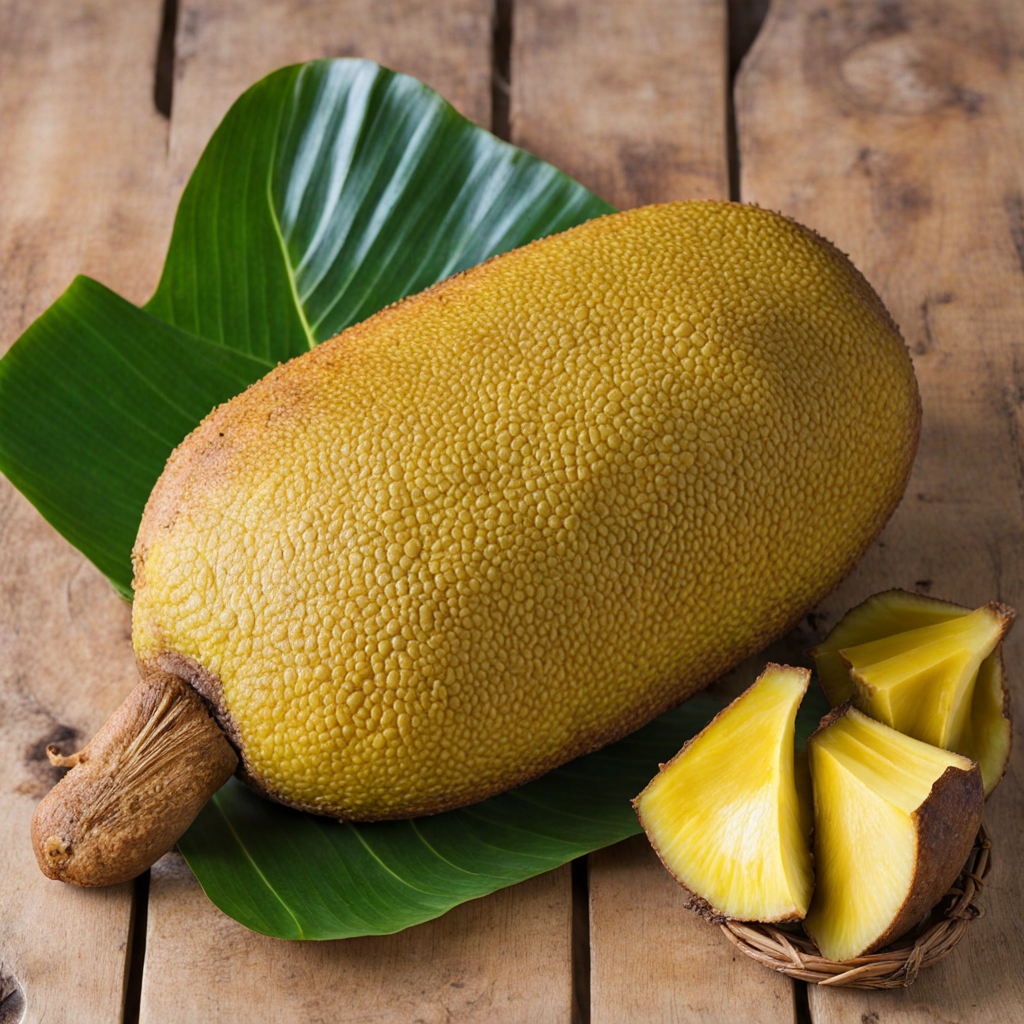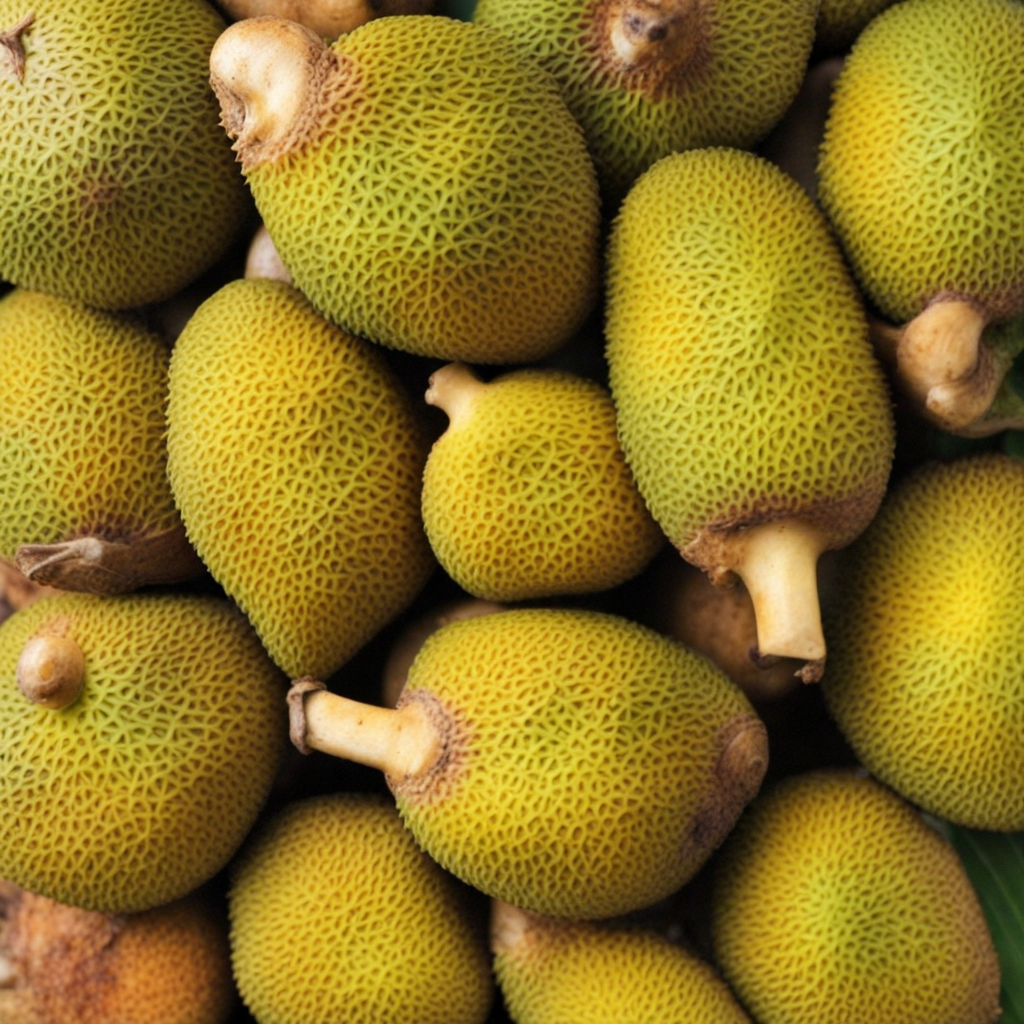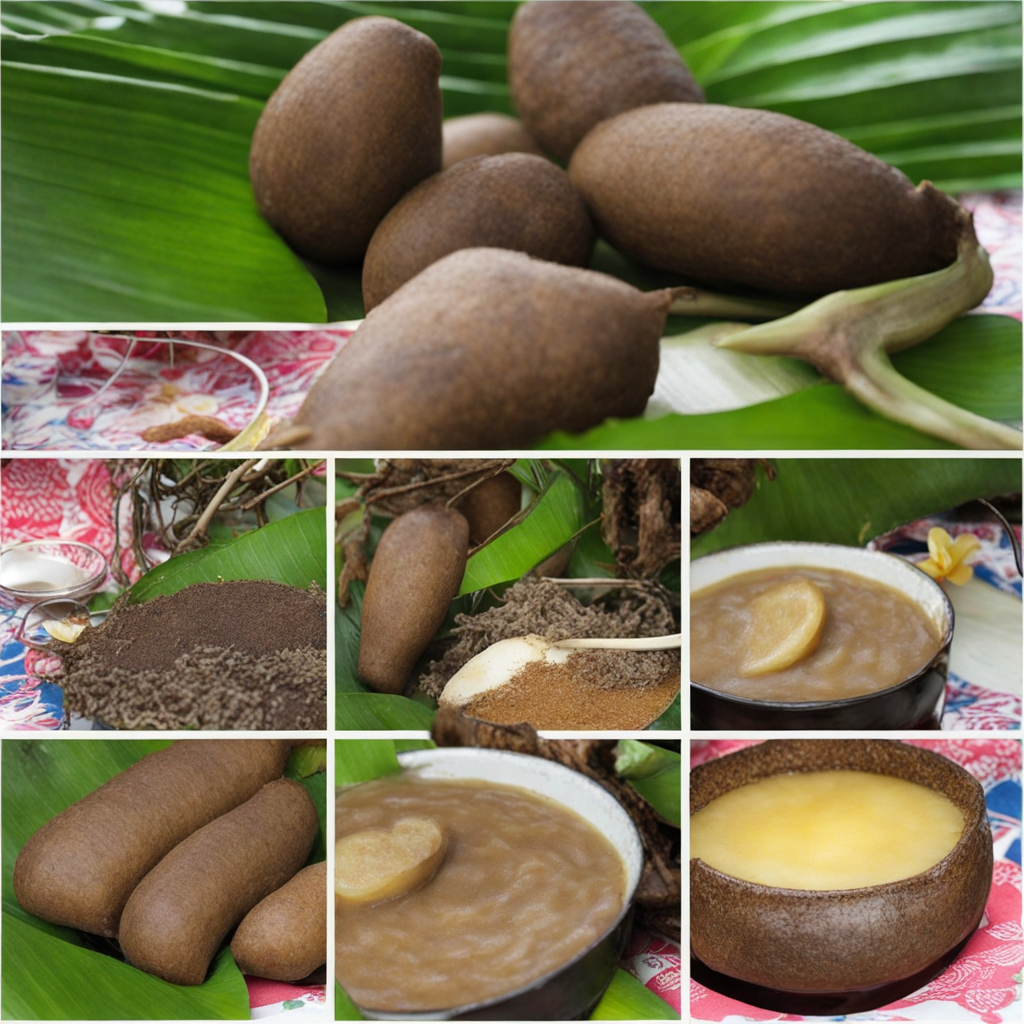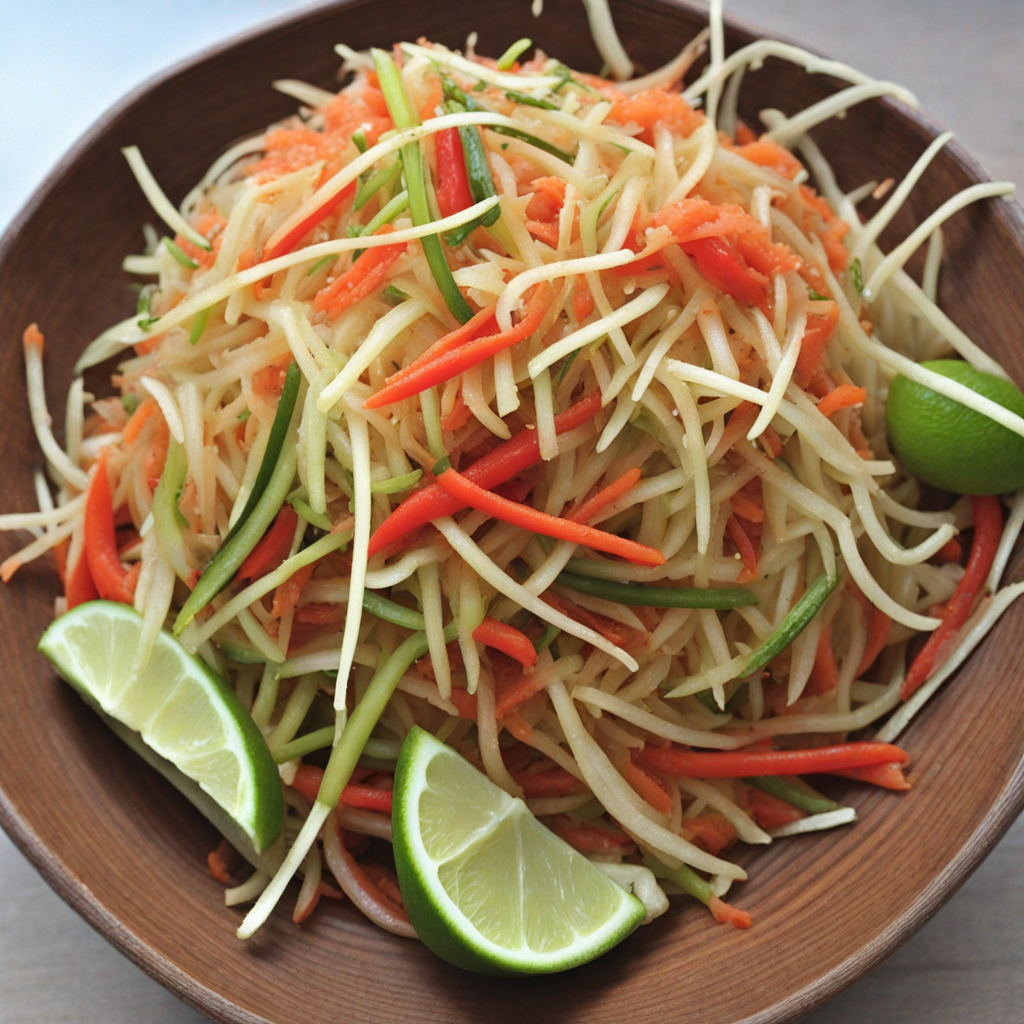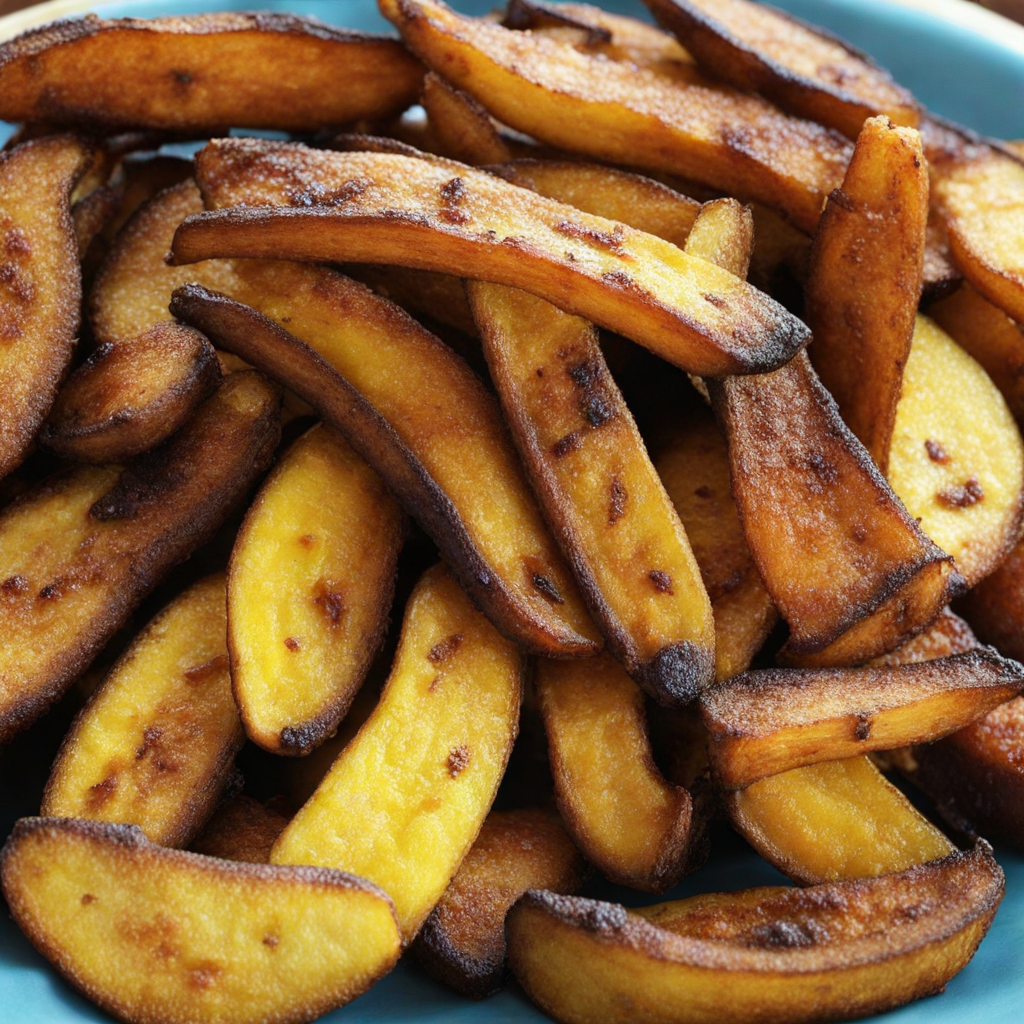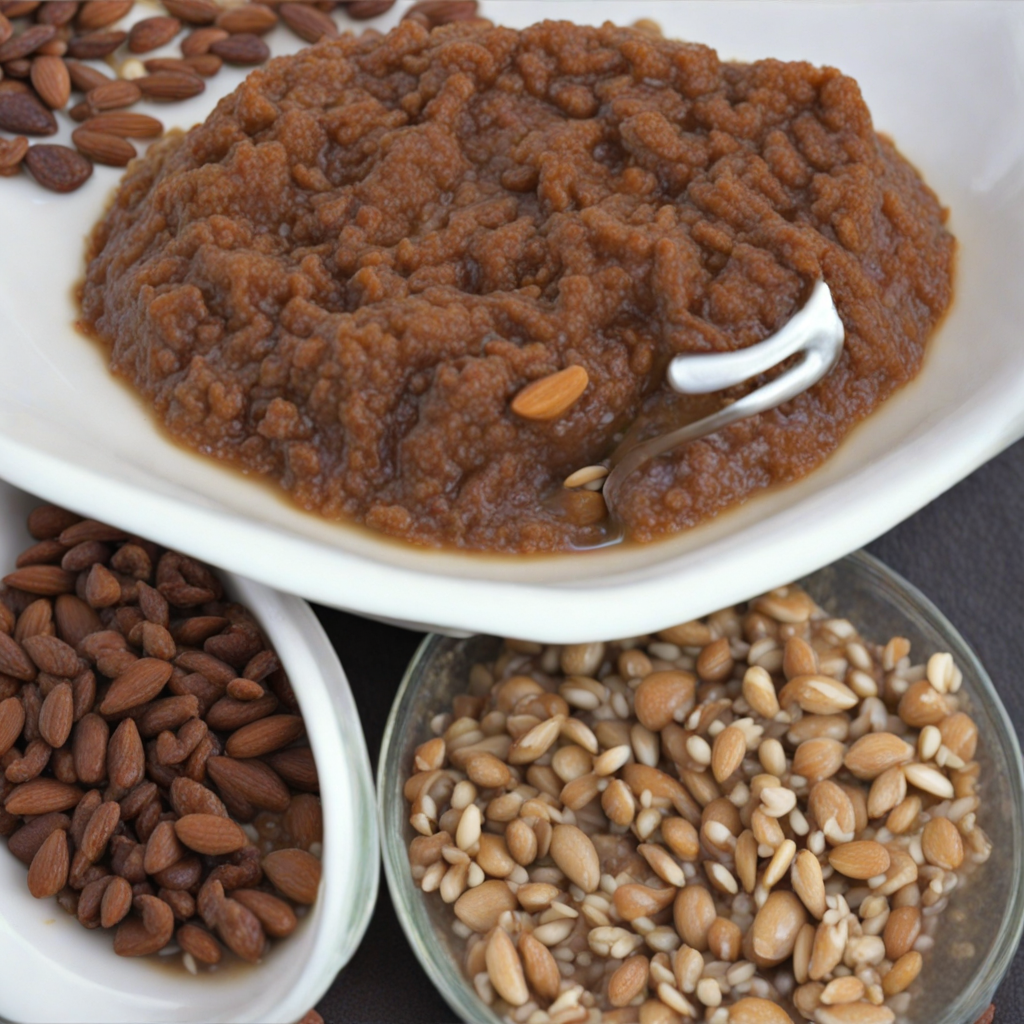Baked Breadfruit
Baked Breadfruit is a delectable dish that showcases the unique flavors of the Solomon Islands, a tropical paradise renowned for its rich culinary heritage. The breadfruit, a versatile and starchy fruit, is harvested when it reaches maturity and is then prepared with simple yet effective techniques. When baked, the breadfruit develops a golden-brown crust that encases its soft and creamy interior, offering a delightful contrast in texture. The natural sweetness of the breadfruit is enhanced during the cooking process, making each bite a comforting experience reminiscent of freshly baked bread but with a distinct tropical flair. In the Solomon Islands, Baked Breadfruit is often enjoyed as a staple side dish or a satisfying main course. It can be served alongside a variety of local ingredients such as fish, coconut cream, and various root vegetables, creating a harmonious blend of flavors that reflect the abundance of the region. The subtle nutty and earthy notes of the breadfruit complement the vibrant tastes of the accompanying dishes, elevating the overall dining experience to new heights. What sets Baked Breadfruit apart is not only its unique taste but also its cultural significance in the Solomon Islands. This dish is often prepared for special occasions and communal gatherings, symbolizing hospitality and unity among families and friends. As you savor the warm, comforting flavors of Baked Breadfruit, you are not only indulging in a delicious meal but also partaking in a rich tradition that celebrates the islands' agricultural bounty and close-knit communities.
How It Became This Dish
The History of Baked Breadfruit: A Culinary Treasure of the Solomon Islands #### Origins and Botanical Background Breadfruit (Artocarpus altilis) is a tropical tree that is renowned for its large, round fruit that is rich in carbohydrates. Native to the South Pacific, it is believed to have originated in the region encompassing New Guinea, the Malay Peninsula, and the Philippines. Brought to the Solomon Islands by ancient seafarers, breadfruit quickly became an integral part of the local diet and culture. The tree thrives in the warm, humid climate of the Solomon Islands, where it can reach heights of up to 85 feet, producing abundant fruit that can weigh anywhere from 1 to 10 pounds. The introduction of breadfruit to the Solomon Islands is closely linked to the migration patterns of Polynesians, who spread the fruit throughout the Pacific Islands. They recognized the value of breadfruit not only for its nutritional benefits but also for its versatility in cooking. Baked breadfruit, in particular, has become a staple dish that showcases the fruit's unique flavor and texture. #### Cultural Significance In the Solomon Islands, baked breadfruit is more than just a dish; it embodies the spirit and traditions of the local people. The preparation and consumption of baked breadfruit are often communal activities, where family and friends gather to share in the experience. It is a dish associated with various cultural rituals, celebrations, and feasts, making it a symbol of hospitality and togetherness. Breadfruit is often referred to as “a blessing from nature” due to its abundance and nutritional value. Rich in fiber, vitamins, and minerals, it serves as a vital food source, especially in rural areas where agriculture is the mainstay of livelihoods. The fruit can be eaten at different stages of ripeness and can be prepared in numerous ways, but baking is one of the simplest and most traditional methods. The baking process enhances the natural sweetness of the fruit while providing a delightful, chewy texture. Baked breadfruit is customarily served alongside fish or meat dishes, and it is often accompanied by traditional sauces made from coconut or local spices. The dish also holds significance during ceremonial occasions, such as weddings and festivals, where it is presented as a token of love and respect. #### Preparation Techniques The traditional preparation of baked breadfruit involves selecting mature green fruit, which is then carefully roasted over an open flame or baked in an underground oven known as an "umu." This method of cooking is deeply rooted in the culinary practices of the Solomon Islands and reflects the resourcefulness of the islanders in utilizing available materials for cooking. To bake breadfruit, the outer skin is typically scored to allow steam to escape, preventing the fruit from bursting during the cooking process. The fruit is then wrapped in banana leaves and placed in a pit lined with hot stones. The umu is covered with more leaves and soil, trapping heat and creating a steaming environment that cooks the breadfruit evenly. This method not only infuses the fruit with earthy flavors but also preserves its moisture, resulting in a tender and flavorful outcome. In modern kitchens, baking breadfruit can also be achieved using conventional ovens, although the traditional method is still celebrated for its authenticity and connection to cultural heritage. The evolution of preparation techniques over time has made baked breadfruit more accessible to a wider audience, allowing it to transcend local boundaries and gain recognition in international cuisine. #### Evolution Over Time The culinary journey of baked breadfruit in the Solomon Islands has seen various influences and adaptations throughout history. With the arrival of European explorers in the 18th century, new ingredients and cooking techniques were introduced, leading to a fusion of flavors that enriched the local food culture. The introduction of spices, such as nutmeg and cinnamon, has found its way into certain baked breadfruit recipes, giving them a unique twist that reflects the islanders’ adaptability. In the 19th century, the British colonial presence in the Solomon Islands further impacted local diets. Breadfruit was recognized for its potential as a staple crop, leading to its promotion as a food source for laborers working on plantations. As a result, baked breadfruit became a common dish among workers, solidifying its status as a practical and nourishing food option. In contemporary times, baked breadfruit has gained attention beyond the Solomon Islands, with chefs and food enthusiasts exploring its potential in global cuisine. The rise of interest in plant-based diets has also contributed to its popularity, as breadfruit is an excellent alternative to traditional starches like potatoes and rice. As food sustainability and cultural preservation become more prominent, baked breadfruit is celebrated not only for its taste but also for its role in promoting biodiversity and traditional agricultural practices. #### Conclusion Baked breadfruit is a dish that tells the story of the Solomon Islands—a narrative steeped in history, culture, and community. From its origins as a vital food source for ancient Pacific Islanders to its place on modern plates, baked breadfruit has evolved while remaining deeply rooted in tradition. It symbolizes resilience, adaptability, and the interconnectedness of people and their environment. As the world becomes increasingly interconnected, the legacy of baked breadfruit continues to thrive, inviting new generations to explore its rich heritage and delicious flavors. In every bite of this cherished dish, one can taste the history of the Solomon Islands and the love and care that has gone into its preparation for centuries. Whether enjoyed at a family gathering, a festive celebration, or a simple meal, baked breadfruit remains a testament to the enduring spirit of the islanders and their culinary ingenuity.
You may like
Discover local flavors from Solomon Islands


